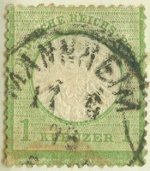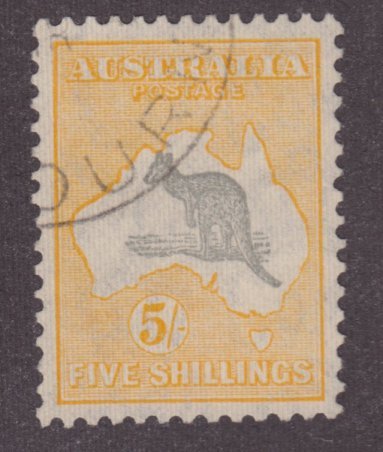
Discussion - Member to Member Sales - Research Center

Discussion - Member to Member Sales - Research Center


07:57:12pm
So, being frustrated he asked if other Machin Maniacs could confirm their actual existence
Being a glutton for punishment I offered an answer and explanation.
Here are the four stamps with the right Deegam Numbers added.
1/ 3.5p Harrison Purple brown PCP2 Dex gum probably from Cyl 17 issued approx Mar 30th 83.
DG35.8.1
2/ 23p Harrison Pastel red PCP2 Dex gum probably from Cyl1 issued approx Mar 30th 83
DG230.1.1
3/ 29p Harrison Purple ACP Dex gum probably from Cyl 4 issued approx Sep 26th 89 with screened value.
DG290.2.1a
4/ 35p Harrison Old gold ACP Dex gum probably Cyl 1 issued approx Sep 10 91 with screened value.
DG350.2.1a
First, let me quote from the section ( Chapter Six, Page 8 ) of the Complete Deegam Machin Handbook;
" ..... Some batches of paper were much duller than others and the extremes of the range came to be known to collectors as PCP1 (dull) and PCP2 (very glossy). For many values there are intermediate degrees of glossiness in a continuous range; others exist in only one state or the other. It must be stressed that such varieties do not stem from differences in the mix. Nor can the two extremes be separated, as is sometimes alleged, by the so-called ‘photonegative effect’ whereby the portrait seems to stand out from the background when viewed obliquely at eye level. This effect is caused simply by the use of the head with a solid rather than a gradated background and has nothing to do with whether the paper is PCP1 or PCP2. ...."
In the technical sense there is no designed printing difference between PCP1 and PCP2. There appear to be a difference to the naked eye, to wit; certain stamps have a standard dull matte surface when viewed with light slanting from the side or top. Another chemically identical stamp viewed the same way will appear somewhat glossy, glossy or very glossy.
The least glossy is PCP1, while the most glossy, and they can be very shiny or (most) glossy, is PCP2. So check what you have and line them up according to glossiness. Then choose the two extremes for your collection. When you have a range that are easily distinguishable you can choose one in the middle and call it PCP1½.
The problem is that when first issued it appeared that here were two distinct issues and thus two distinct numbers were assigned. When the 12½p RD2 coils were discovered having the ½p (DG 5.11.2) and 4p (DG 40.8.1) stamps occurring se-tenant it became obvious that the difference had to do with something else. You cannot have both PCP1 and PCP2 side by side from the same sheet, having been printed at the same time.
Back to the CDMH;
" .... Accordingly, PCP2 is treated in this book as a minor variation appropriate to level 3. The stamps warrant only lower case letter suffixes to the catalogue numbers, unless whole numbers are justified for other reasons, such as, for example, the fact that a particular stamp does not exist on both papers. Some values exist on PCP1 as well as the experimental PCP (see above) and these are separately listed at level 3. ...."
Good Luck, I hope that helps.

Login to Like
this post
Could you define acronym PCP for the uninitiated please? 

1 Member
likes this post.
Login to Like.

08:13:13pm
PCP is phencyclidine, commonly called angel dust. It is a dissociative drug with hallucinogenic side effects. When working with stamps under the influence of PCP, make sure you are in a well ventilated room, locked from the outside. 

1 Member
likes this post.
Login to Like.
Turns out I am uninitiated on both counts. 

1 Member
likes this post.
Login to Like.
Antonio, just don't lick the front of a Machin stamp. You won't get high off the PCP, and the Queen will appreciate your not licking her face.

2 Members
like this post.
Login to Like.
Oh yea, that what we in Tatooine put on our weed!
Gotta lic more stamps....
Just tripin' out....
TuskenRaider

1 Member
likes this post.
Login to Like.
The 29p hardly ever shows up in kiloware but the 35p is more common.
The 29p & 35p are both ACP & nothing else as far as I know.
PCP - Phosphor Coated Paper, dull fluorescence under UV, matt surface.
PCP2 - Shiny surface to PCP. Shows a negative reaction to the portrait
when stamp is held flat to the light. The Queen's head resembles a
photographic negative & is easily distinguishable from the rest of the
surface.
ACP - Advance Coated Paper, Very bright under short wave UV. Has an
afterglow when UV turned off.
FCP - Fluorescent Coated Paper, fluorescent under UV.
OCP - Ordinary Coated Paper, creamy to white paper but does NOT shine
under UV.
Does this make sense anyone....Cheryl

2 Members
like this post.
Login to Like.
Silence in the face of adversity is the father of complicity and collusion, the first cousins of conspiracy..
25 Feb 2015
07:57:12pm
We had an interesting query posted at the Machin Forum website by a member there. He has been searching for the PCP version of certain stamps, listed below. All four had limited printing runs and thus are in the minority when sorting through a kilo lot. In fact, sometimes I have sorted through ten thousand postally used Machins and did not find a good example of all four.
So, being frustrated he asked if other Machin Maniacs could confirm their actual existence
Being a glutton for punishment I offered an answer and explanation.
Here are the four stamps with the right Deegam Numbers added.
1/ 3.5p Harrison Purple brown PCP2 Dex gum probably from Cyl 17 issued approx Mar 30th 83.
DG35.8.1
2/ 23p Harrison Pastel red PCP2 Dex gum probably from Cyl1 issued approx Mar 30th 83
DG230.1.1
3/ 29p Harrison Purple ACP Dex gum probably from Cyl 4 issued approx Sep 26th 89 with screened value.
DG290.2.1a
4/ 35p Harrison Old gold ACP Dex gum probably Cyl 1 issued approx Sep 10 91 with screened value.
DG350.2.1a
First, let me quote from the section ( Chapter Six, Page 8 ) of the Complete Deegam Machin Handbook;
" ..... Some batches of paper were much duller than others and the extremes of the range came to be known to collectors as PCP1 (dull) and PCP2 (very glossy). For many values there are intermediate degrees of glossiness in a continuous range; others exist in only one state or the other. It must be stressed that such varieties do not stem from differences in the mix. Nor can the two extremes be separated, as is sometimes alleged, by the so-called ‘photonegative effect’ whereby the portrait seems to stand out from the background when viewed obliquely at eye level. This effect is caused simply by the use of the head with a solid rather than a gradated background and has nothing to do with whether the paper is PCP1 or PCP2. ...."
In the technical sense there is no designed printing difference between PCP1 and PCP2. There appear to be a difference to the naked eye, to wit; certain stamps have a standard dull matte surface when viewed with light slanting from the side or top. Another chemically identical stamp viewed the same way will appear somewhat glossy, glossy or very glossy.
The least glossy is PCP1, while the most glossy, and they can be very shiny or (most) glossy, is PCP2. So check what you have and line them up according to glossiness. Then choose the two extremes for your collection. When you have a range that are easily distinguishable you can choose one in the middle and call it PCP1½.
The problem is that when first issued it appeared that here were two distinct issues and thus two distinct numbers were assigned. When the 12½p RD2 coils were discovered having the ½p (DG 5.11.2) and 4p (DG 40.8.1) stamps occurring se-tenant it became obvious that the difference had to do with something else. You cannot have both PCP1 and PCP2 side by side from the same sheet, having been printed at the same time.
Back to the CDMH;
" .... Accordingly, PCP2 is treated in this book as a minor variation appropriate to level 3. The stamps warrant only lower case letter suffixes to the catalogue numbers, unless whole numbers are justified for other reasons, such as, for example, the fact that a particular stamp does not exist on both papers. Some values exist on PCP1 as well as the experimental PCP (see above) and these are separately listed at level 3. ...."
Good Luck, I hope that helps.

Login to Like
this post

re: Distinguishing PCP 1 and PCP 2
Could you define acronym PCP for the uninitiated please? 

1 Member
likes this post.
Login to Like.
They who would give up essential Liberty, to purchase a little temporary Safety, deserve neither Liberty nor Safety. -Benjamin Franklin
25 Feb 2015
08:13:13pm
re: Distinguishing PCP 1 and PCP 2
PCP is phencyclidine, commonly called angel dust. It is a dissociative drug with hallucinogenic side effects. When working with stamps under the influence of PCP, make sure you are in a well ventilated room, locked from the outside. 

1 Member
likes this post.
Login to Like.

re: Distinguishing PCP 1 and PCP 2
Turns out I am uninitiated on both counts. 

1 Member
likes this post.
Login to Like.

re: Distinguishing PCP 1 and PCP 2
Antonio, just don't lick the front of a Machin stamp. You won't get high off the PCP, and the Queen will appreciate your not licking her face.

2 Members
like this post.
Login to Like.

re: Distinguishing PCP 1 and PCP 2
Oh yea, that what we in Tatooine put on our weed!
Gotta lic more stamps....
Just tripin' out....
TuskenRaider

1 Member
likes this post.
Login to Like.
06:38:54am
re: Distinguishing PCP 1 and PCP 2
The 29p hardly ever shows up in kiloware but the 35p is more common.
The 29p & 35p are both ACP & nothing else as far as I know.
PCP - Phosphor Coated Paper, dull fluorescence under UV, matt surface.
PCP2 - Shiny surface to PCP. Shows a negative reaction to the portrait
when stamp is held flat to the light. The Queen's head resembles a
photographic negative & is easily distinguishable from the rest of the
surface.
ACP - Advance Coated Paper, Very bright under short wave UV. Has an
afterglow when UV turned off.
FCP - Fluorescent Coated Paper, fluorescent under UV.
OCP - Ordinary Coated Paper, creamy to white paper but does NOT shine
under UV.
Does this make sense anyone....Cheryl

2 Members
like this post.
Login to Like.

